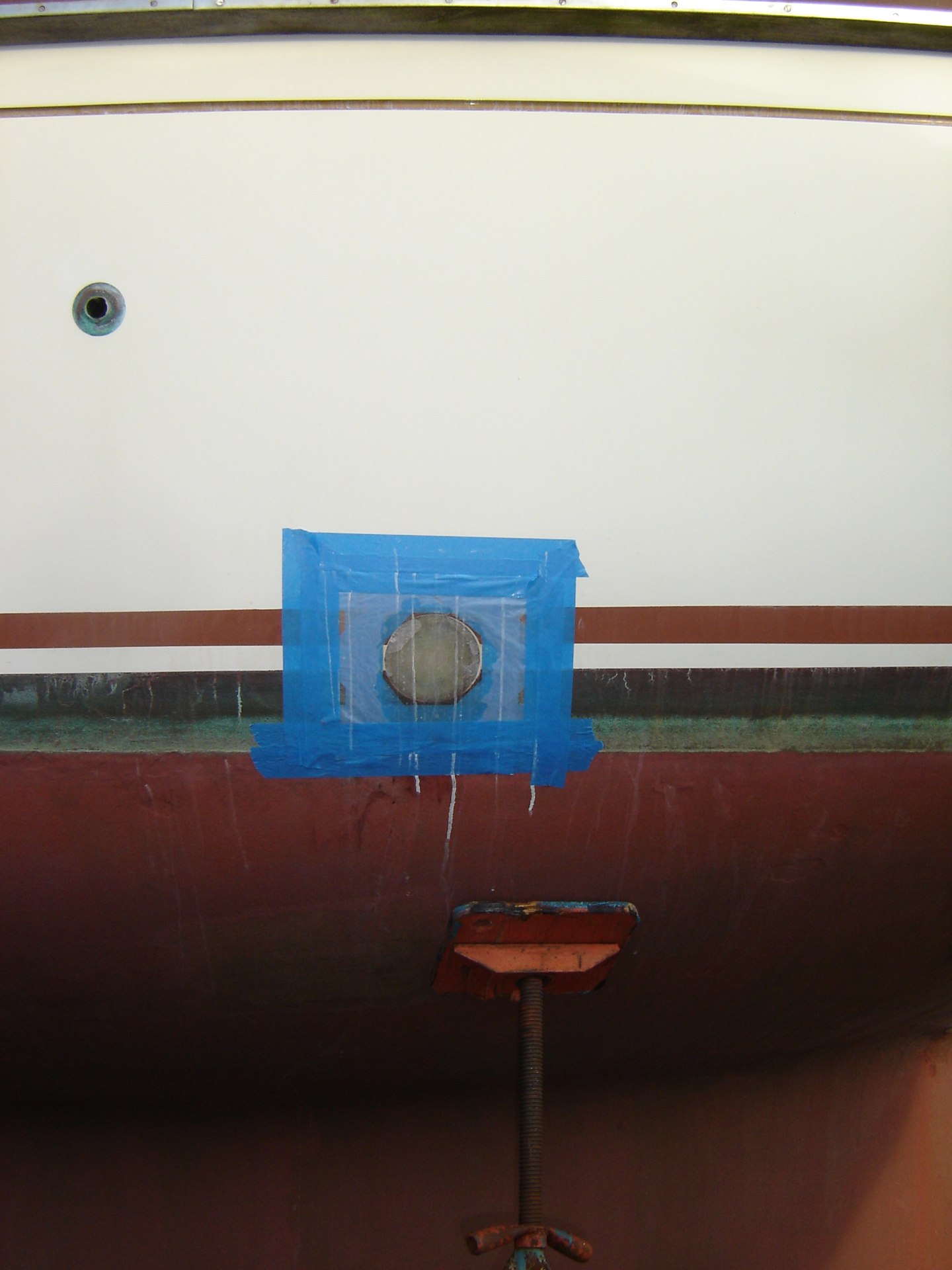That eerie orange glow is daylight shining through a patch in our hull. We had two through-hull fittings removed. One was for the former aft air conditioner ("Cindy Ann Improved the Galley. I Made a Hole.")
The other was an unused through-hull drain for the aft head. In the olden days you could flush your toilet directly overboard into—well—into anything your boat was sitting in. How nasty. Nowadays we have to flush into a holding tank and pump it out. If we're at sea (over three miles off shore) we can run a "macerator" pump to empty the holding tank.
When Whitby Boatworks built Red Ranger, they included two head drain through-hulls. The previous owner, however, saw no need to connect the head to the through-hull because he didn't see any situation where he would be flushing directly overboard.
What the builder did was to cap off the through-hull with plumbing and hose clamps.
What we did was pay a guy to grind down the hull, saw off the bolts holding it in place, pull the thing out and fill the hole with FRP (Fiber-Reinforced Plastic).
The other hole was simpler since there wasn't a big hideous piece of bronze in the way.
What's important is that
-
Fewer holes in the boat is better.
-
Pumping waste overboard is nasty and mostly illegal in US waters. Almost everywhere you might want to visit is a No Discharge Zone.
-
Unregulated agricultural runoff ("nonpoint source") is a far, far bigger problem than boat ("point source") effluent. But who wants to mess with the farm lobby?
-
"The current lack of pumpout facilities hinders compliance with no-discharge laws" is true for many areas around the US. We can prohibit bad behavior (flushing overboard) but for some reason, we can't promote good behavior (install a pump-out facility and make sure it works and is accessible.) Vessel Sewage Discharges and No Discharge Zones.
Serious repair of environmental damage isn't helped by a patchwork of legislation.
The other hole, ironically, was something that I repaired last year ("Unbelievable"). After fixing it, I've now removed it . I guess that's the way wisdom works: learning from our mistakes.
We really like the idea of filling the holes. It's two fewer things to worry about.
And we really like clean water. It's important to press for better controls over "nonpoint source" pollution: mines, farms, forestry, parking lots and roads, urban areas.







